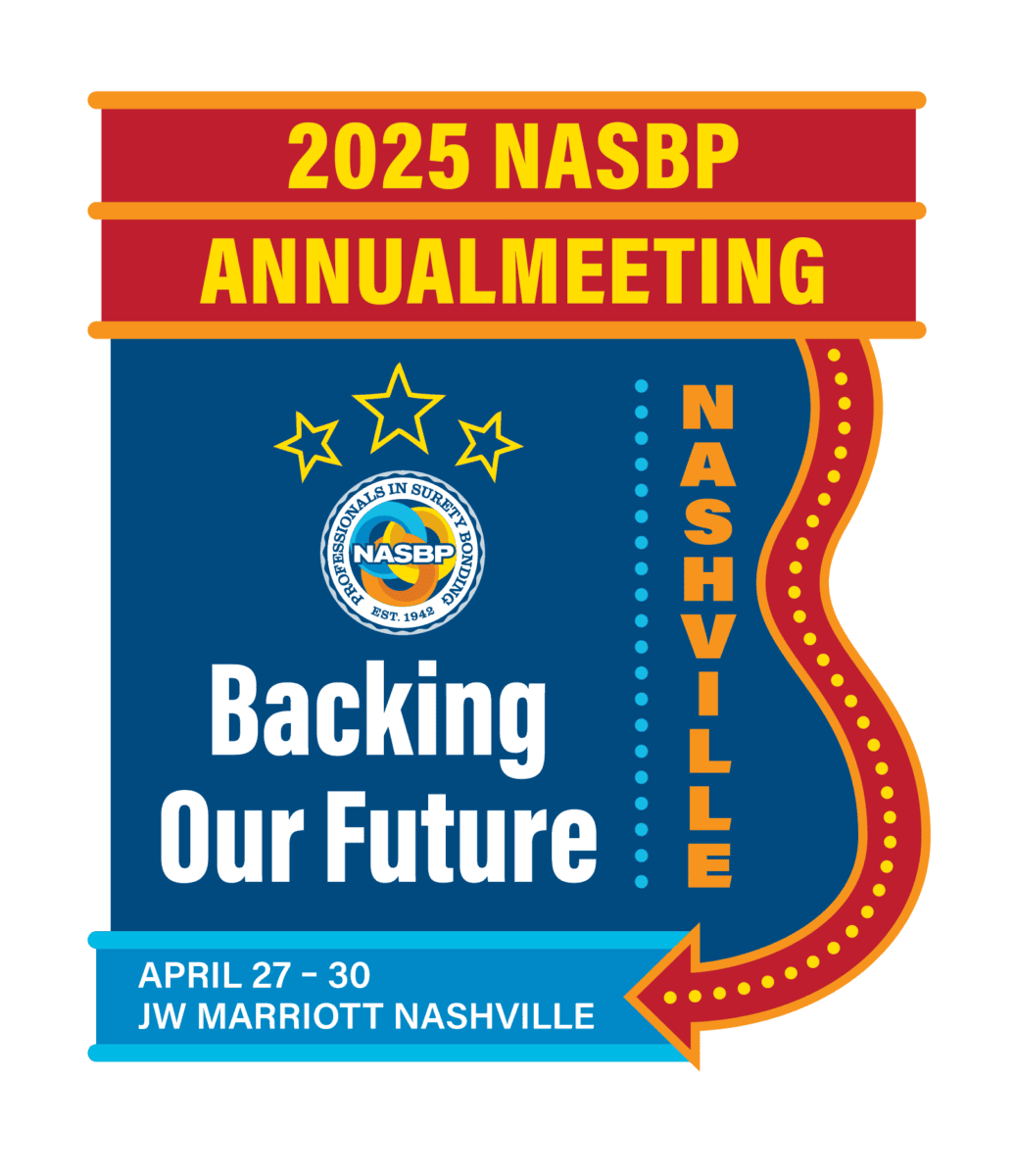
ConsensusDocs has four new resources that can offer a greater understanding of construction contracts–two webinars and two informative articles. See below.
1) Gain insight on the most important and often poorly drafted contract “killer clauses”
Did you know that unfair contract clauses cause a 20% premium on contract prices, cause claims, and litigation?
On Wednesday, March 9, 2022, at 2:00 p.m. EST join the ConsensusDocs’ live webinar Contract Killer Clauses and How to Negotiate Out of Them. NASBP members receive $20 off on their registration for this webinar if they use the code: w22q1%%$nasbp upon checkout, reducing the price to $79.00. Don’t miss out on the opportunity to learn what examples are the most important and often poorly drafted “killer clauses” and how you can avoid them to get better project results. Register today.
2) Learn more about the ConsensusDocs performance and payment bonds
Why is a self-help provision attractive to general contractors to consider in their subcontract bond forms?
On Wednesday, April 27, 2022 at 2:00 p.m. EST, join the ConsensusDocs webinar Best Practice Approaches to Performance and Pay Bonds. NASBP members receive $20 off their registration for this webinar if they use the code: W22Q2NASBP upon checkout, reducing the price to $79.00. This webinar will offer an overview of the eight new standard ConsensusDocs performance and payment bonds, review the self-help provision for subcontract performance and payment bonds, look at a two-step process that provides clear time frames for a surety’s investigation and response, and much more. Register now.
3) Construction Warranties: Have You Seen Me Lately?
By: Christopher D. Cazenave, Partner, Jones Walker, LLP
A construction contract typically contains many different types of warranties. Owners expect contractors to explicitly warrant their workmanship, contractor-provided materials and equipment, and in many instances to assume other warranty risks that may obligate the contractor years after the project is completed.
No contractor wants to be surprised years after a project is completed by the existence of warranty obligations that were not considered or negotiated at the outset of the project. To help avoid this situation, warranties should be treated similar to other critical risk-sharing provisions in the contract in concert with other bargained-for provisions, including for example price and schedule.
This article provides a brief overview of warranty obligations found in typical construction contracts followed by a few practical considerations for contractors to consider when negotiating warranty obligations.
Typical Explicit Warranties Spelled Out in the Construction Contract
Explicit or express warranties are those spelled out in writing in a contract. While construction contracts can differ greatly, a good starting point to consider typical explicit warranties is to look at provisions from a standard industry contract such as ConsensusDocs (CD) 200—Standard Agreement and General Conditions Between Owner and Constructor (Lump Sum Price). The express warranties in CD 200 found at Sections 3.8 and 3.9 cover (1) materials and equipment, (2) warranty that the work is performed is a good and workmanlike manner, and (3) vendor warranties.
Contractors typically warrant that the materials and equipment provided under the contract will be new, of good quality, and free from defects. There are important details and limitations for the contractor to consider, however, for owner-provided and subcontractor-provided materials and equipment. When possible, keep risk with the party who has control of that risk and beware of unreasonable risk-shifting warranty provisions that leave the contractor—instead of other more appropriate parties—holding the bag. As seen with Section 3.8.2 of CD 200, owner-provided materials and equipment should be “covered exclusively by the warranty of the manufacturer” and not the responsibility of the contractor. Subcontractor warranties can be trickier and careful attention needs to be given to the flow-down provisions such that the subcontractor’s warranty obligations to the contractor parallel the contractor’s obligations to the owner.
The contractor also explicitly—and impliedly by law as discussed below—warrants that the work (as that term is defined under the contract) will be performed in a good and workmanlike manner free from material defects. Relatedly, the contractor is warranting that craft labor have suitable training and experience. Further, the work must normally comply with express specifications, procedures, and any applicable legal and industry standards. A contractor’s warranty against defective work often dovetails with the callback (repair) warranty, which warrants that the work will be free from defects for a period of one year after substantial completion of the project—another topic that will be expanded upon below.
A third type of express warranty typically provided is warranty of equipment or a system that is warranted directly from the third-party manufacturer or distributor. The contractor is not usually a party to the vendor’s warranty. And vendor warranties are often not included in the construction contract although they may be a required submittal from the contractor to ensure the warranty is being provided. Contractors should be wary of agreeing to obtain a warranty from a vendor that is more expansive than the warranty offered by the vendor.
Warranties Implied by Statute or Common (Court-Made) Law
Another source for warranties on a construction project may be federal or state statutory or common law. Implied warranties are similar state-to-state but there are important exceptions that should be vetted with your attorney depending on what law will apply to the contract. This includes whether the Uniform Commercial Code (UCC) may be applicable to the construction contract, which is separate important consideration not covered in this article. The two common implied warranties described here are (1) good workmanship and (2) vendor literature.
Perhaps the most common implied warranty across most jurisdictions—and the implied warranty that is often the subject of construction claims—is the rule that contractors perform services in a good and workmanlike manner. Again, the standard for workmanlike manner will vary from state to state. But what is relatively well-settled is that “good and workmanlike manner” does not equal perfection. Instead, the standard for workmanlike manner is that the work be performed with the knowledge and efficiency possessed by contractors of acceptable skill and competency in the trade for which the contractor is employed.
Another important source for implied warranties on a construction project may be literature or other representations by the manufacturer or distributer of a product or system. Take the example of a roofing system where the manufacturer’s literature contains a representation that the roof will last for 20 years. Even if the construction contract contains only the one-year repair warranty discussed above, a court may well find that the contractor responsible for providing the roofing system—absent an express warranty between the manufacture and the owner—is liable if the roof fails prior to the 20-year lifespan contained in the literature. Further, there may not need to even be an express representation in the literature to create a warranty obligation relating to the contractor-provided material or equipment. Contractors should carefully review any literature to be provided to the owner relating to a particular product, and, where possible, the contractor should require that manufacturer to warrant its product directly with the owner.
Beware—Important Warranty Obligations May Survive Years Past a Contractor’s Standard One-Year Repair Warranty
There can be confusion regarding the different types of contractor warranties and the length of time that a claim can be made under a warranty. Discussed above, the repair (or callback) warranty ordinarily covers workmanship on the completed project for one year after substantial completion of the project. Agreeing to when “substantial completion” occurs to start the one-year warranty period—standing alone—can often be a touchy issue between an owner and contractor.
But in addition to the issue of when substantial completion occurred, it is important to understand that warranties covering materials and equipment and other warranties are not restricted by the same one-year time period unless there is express language in the contract stating otherwise. A warranty claim made for defective materials or equipment, for example, may survive long after the one-year callback warranty and be time-barred only by an applicable statute of limitation for a breach of contract/warranty claim.
Perhaps the most significant distinction between the one-year repair warranty and the other warranties relates to the issue of latent defects. Using a roofing system example again, let’s say there is a latent defect in the system at the time of installation. A latent defect, by definition, is a defect that could not have been reasonably discovered until after some period of time had passed. The one-year callback warranty may or may not apply to a latent defect depending on whether the defect becomes evident during the one-year warranty period. But the warranty covering the roofing system, which was defective in this example at the time of installation, may be enforced well after the one-year repair period. It is important for the contractor to consider the different durations and scope of different warranties being provided in the contract.
Some Key Takeaways
- Consider warranties in the contract in concert with other bargained-for provisions, including price and schedule.
- Pay attention to the flow down provisions such that the subcontractor’s warranty obligations to the contractor parallel the contractor’s obligations to the owner.
- Understand durational warranties (e.g., the one-year repair warranty) versus other warranties such as a warranty against defective equipment, which may apply years after the project is completed.
- Read the warranty provisions carefully.
4) ConsensusDocs’ Balanced Indemification Provision Provides a Fair ‘Hold Harmless’ Agreement
That is enforceable under State Construction Laws
ConsensusDocs standard agreements contain an indemnification provision that some refer to as a “hold harmless” agreement. ConsensusDocs, unlike other standard contract documents, integrates its terms and conditions in the same document as the agreement. This provides better integration and avoids conflict between two separate documents.
ConsensusDocs utilizes a limited form of indemnification. In the prime agreement, the ConsensusDocs 200, the Constructor is considered the Indemnitor and holds the indemnitee, the Owner, harmless from liability. However, this “hold harmless” shield for the Owner is only to the extent of the Constructor’s own negligence. This limited form indemnification provision employs a comparative fault analysis to determine the scope of financial responsibility. In other words, ConsensusDocs follows the principle that a contractor should be responsible for its negligence, but not the negligence of others.
This contrasts with broad form indemnification. Broad form indemnification would have the Indemnitor/Constructor hold the indemnitee/Owner harmless for the indemnitee’s own negligence even if the indemnitee/Owner were 100% at fault. Many state legislatures have deemed this unfair and outlawed the enforceability of such through anti-indemnification laws. In those states, an indemnification provision in a construction contract that indemnifies a party from its own negligence is void and unenforceable. By contrast, the ConsensusDocs limited indemnification is enforceable even under state anti-indemnification laws because the obligation extends only to the extent of one’s own negligence.
In addition to utilizing a limited form of indemnification, ConsensusDocs’ indemnification is reciprocal. Both parties are required to indemnify one another. This gives equal treatment to Owners and Constructors alike. An Owner indemnifies the Constructor to the extent of the Owner’s own negligence. So, in addition to getting protection from the Constructor for the Constructor’s negligence, it must give protection to the Constructor for the Owner’s own negligence. This follows the principle of “What’s good for the goose is good for the gander.”
ConsensusDocs are the only contracts endorsed by 40+ leading design and construction industry organizations. With a library of 100+ contract documents addressing all methods of project delivery, ConsensusDocs incorporates fair risk allocation and best practices to represent the project’s best interests. Coalition members represent design professionals, owners, contractors, subcontractors, and sureties (DOCS).
___________________________________________________________
The NASBP membership can save 20% on ConsensusDocs document subscription packages using new promo code!
Because NASBP is an endorsing member of ConsensusDocs, the NASBP membership is entitled to nearly 18% off of their purchase of ConsensusDocs subscription packages from ConsensusDocs at the ConsensusDocs online store when the following discount code is provided when prompted during purchase, Promotion Code: 62UY4MST.
For more information, visit consensusdocs.org.
For information about the ConsensusDocs bond forms, visit nasbp.org.
NASBP also provides the ConsensusDocs bond forms for download from learn.nasbp.org.
NASBP is an endorsing organization of the ConsensusDocs coalition, an unprecedented effort by 40 industry organizations to identify industry best practices and to incorporate such practices in a new generation of consensus industry standard form documents.
Get Important Surety Industry News & Info
Keep up with the latest industry news and NASBP programs, events, and activities by subscribing to NASBP Smartbrief.




